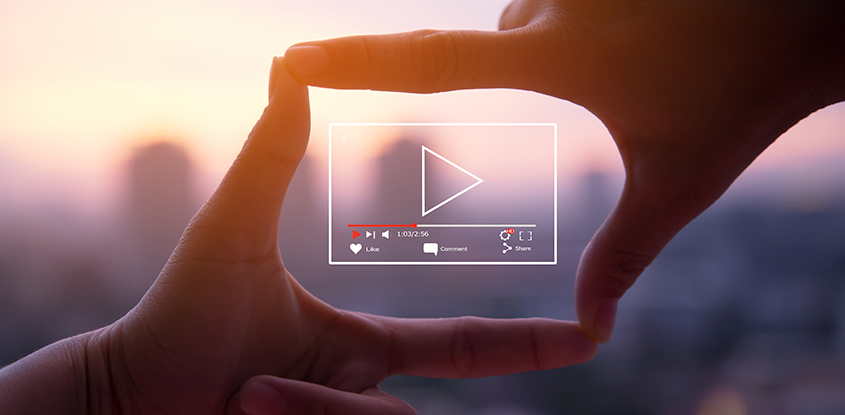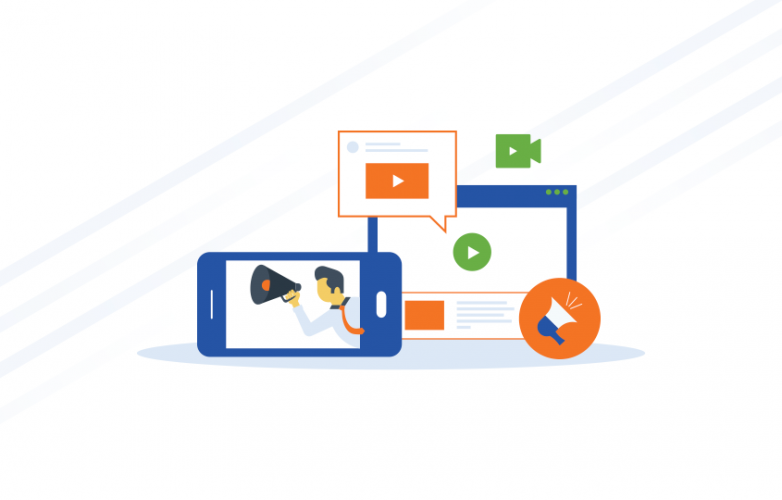With digital advertising still the marketing strategy of choice for businesses of all sizes, it’s crucial for business owners to have their fingers on the pulse of this medium’s latest trends. If you’re a business owner who wants to leverage digital advertising to win a larger share of your market, read on.
Learn how you can put 2020’s top digital advertising trends to work for you. Here’s a list of the trends you need to master to rake in more revenue during the coming year.
1. Go Native with Programmatic Ad Buys
In 2020, says Social Media Today’s Chad Pollitt, advertisers need to turn to programmatic ad buys instead of social media to showcase their native ads. With programmatic advertising, you can buy ads on platforms on which you know your customers will spend time.
One of the most logical platforms on which to place programmatic ads is in your email newsletter.
First of all, your subscribers have already expressed an interest in the products, services, and information you provide.
Secondly, when you turn newsletter ad placement over to a programmatic advertising platform, you can rest assured that each of your ads will appear on the newsletters of exactly the right customers at just the right time.
Native ads attract 53 percent more views than do display ads.
Larisa Bedgood
Statistics, too, indicate a positive trend for native advertising. According to native ad expert Larisa Bedgood, writing in Business2Community.com, native ads attract 53 percent more views than do display ads. Not only do they get more views, but they also increase interest in buying your products and services – by nearly 20 percent!
At inboxAds, for example, we use AI and other leading-edge technologies to automate ad buying. We segment newsletter recipients based on demographics, location, and online behavior so that the ads will appeal to each recipient.

The companies on whose newsletters your ads will appear provide products and services that likely complement but not compete with your own. Native, programmatic advertising on email newsletters, then, are a win-win situation since both the ads and the newsletters’ main messages provide helpful information tailored to each customer segment.
Each time a customer clicks through to your ad, the newsletter’s publisher receives extra revenue. With this potential for email monetization, publishers have a huge motivation to run programmatic native ads, customers are more likely to click on them, and advertisers are placing their ads on newsletters whose customers are interested in what they sell.
2. Use Influencer Marketing to Leverage the Bandwagon Effect
Whether you’re just starting out in digital advertising or you’ve been around for a few years, it pays to have well-known people and businesses – called influencers – on your side. Whether you choose to partner with influencers on TikTok (the hands-down favorite of Generation Z and younger millennials), Instagram, or another platform, you need to choose your partners – and your platforms – wisely.
Like other advertising partners, your influencers’ market should have at least a few touchpoints with your own target market. For example, a guitar studio who wants to appeal to a younger audience might partner with an up-and-coming guitarist with tons of TikTok followers, while a company that makes classical guitars might want to partner with a classical guitarist who is a YouTube influencer.

So long as you choose your partners to complement your offerings and offer a deal that benefits both partners (you’ll need to give them plenty of exposure to your target customers as well), influencer marketing looks to be one of 2020’s most promising digital marketing trends.
3. Amazon Will Rise to Dominate B2C Marketing
Many business-to-consumer businesses are sending their customers straight from their native ads’ calls to action to the company’s Amazon sales pages, says Business2Community’s Wesley MacLaggan. With the platform’s ever-growing popularity, it simply makes sense, especially if you use native advertising.
Native ads generally provide helpful tips and other information that help potential customers solve problems. If you position your product as part of that solution, sending customers immediately to your product’s sales page on this hugely popular platform will likely produce a sale.
4. Video Marketing Will Continue to Captivate Audiences
According to Nidhi Dave, a digital marketing expert at Single Grain, video looks like it will keep its strong position among winning digital marketing strategies all through the next year – and the next decade. The reason? The statistics tell the story.
- 70 percent of consumers share branded videos.
- 72 percent of all brands see an improvement in conversion rate when they use videos as a major component of their marketing strategy.
- 52 percent of all customers surveyed said that product videos help them feel more confident in their online purchases.
- For B2B audiences, 65 percent of decision-makers visit a company’s website after seeing one of its videos, while 39 percent of them contact the business after watching a branded video.
In addition, if you use YouTube pre-roll video ads to promote your longer product and service videos, you can use their powerful data tools to ensure that only potential customers will see your videos.

Don’t forget to use native email ads, too, to point potential customers to your videos for a full viewing. It’s more likely that your target customers will head to their inbox first thing in the morning than checking their favorite YouTube channel for new videos.
5. Leverage Premium Content Subscribers with Native Ads
Today’s consumers have busy lives, so many of them subscribe to premium content to avoid intrusive ads. That trend looks to only move upward, says SummitX founder and strategy director, Eric Shutt.
You can deal with this trend by incorporating non-intrusive, native ads into your premium content. If you have high-quality content that people will pay for, you can include relevant native ads that run at the bottom of the content.
Consumers who want to learn more about your topic can then click on those ads without the ads intruding in on their reading, listening, or viewing experiences. Of course, to do so, you would need to have a subscription service of your own, like a paid, high-value online newsletter. Third-party premium services, such as YouTube Premium, Netflix, Amazon Prime, and others typically do not run ads.
6. Leverage Community Marketing to Bring People Together Around Your Brand
In today’s highly fragmented world, people are looking for ways to come together in community. As the Internet marketing experts at CapSumo point out, brands that create spaces for people to come together around shared interests will capture a larger share of the market.

The more you leverage community, the more brand advocates you will amass. With meetups, social media groups, and online forums, your brand will build trust and loyalty – two qualities that will position your brand for success for well beyond 2020.
7. AI and Machine Learning Take the Lead in Targeted Ads
Leveraging your target market’s data to predict buying habits can produce better results for less money invested. AI and machine learning technologies that use data to optimize your digital marketing campaigns, aiming them at the right customers at the right time looks to be one of 2020’s must-have digital advertising tools, predicts Business2Community’s Wesley MacLaggan.
If you don’t have access to cutting-edge data analysis tools, partner with a third-party company, such as inboxAds, that does have the technology to get your ads in front of people likely to buy. With AI and machine learning predicting which audiences will be more interested in your content, you’ll see more conversions since you’re reaching a custom-targeted audience.
Trends Come and Go, but Email Remains One of the Best Bets for Digital Marketers
No matter what other 2020 digital trends you embrace, email will remain one of the best ROI drivers during the coming year. On the other hand, with a return-on-investment average of 38 to 1, email marketing remains a steady source of revenue for advertisers.
Since companies who publish newsletters have such good results, those advertisers who choose to place their ads on these newsletters can ride email marketing’s coattails to marketing success in 2020 and beyond.
Businesses who publish newsletters can thus monetize their emails by giving related ads space. Monetizing their email newsletters helps them cut costs even as they enjoy a huge return on their investment.
Whether you’re an advertiser or a publisher wanting to monetize emails, we can help.
Get in touch with our inboxAds team for a chat today!






